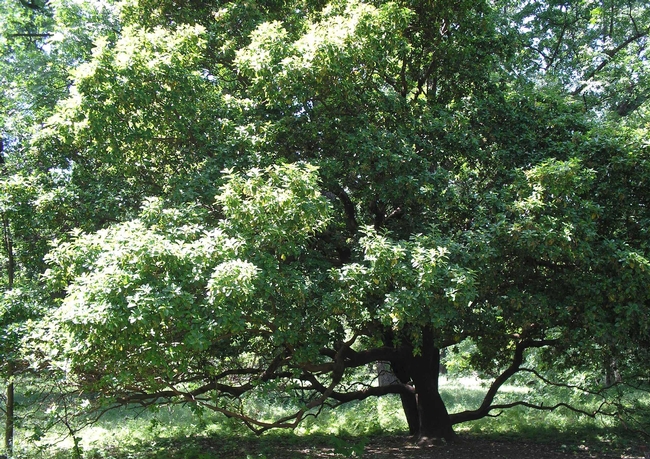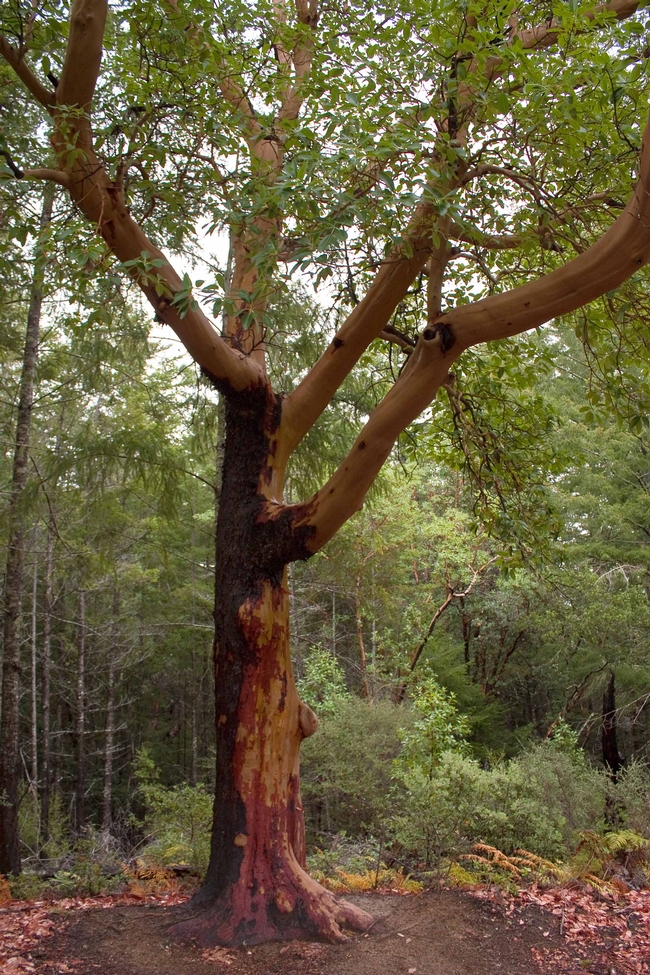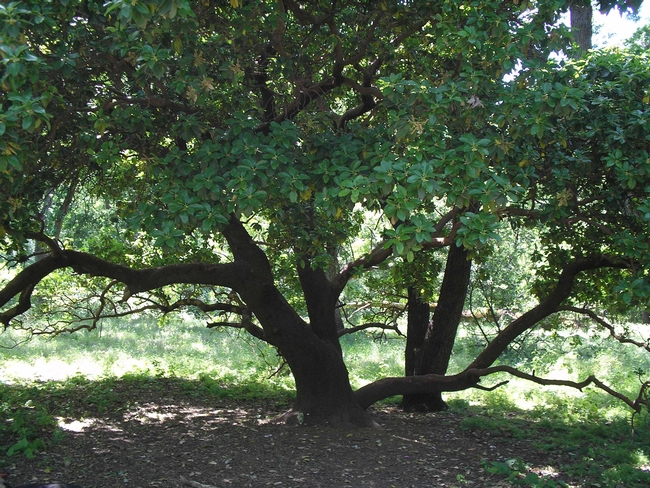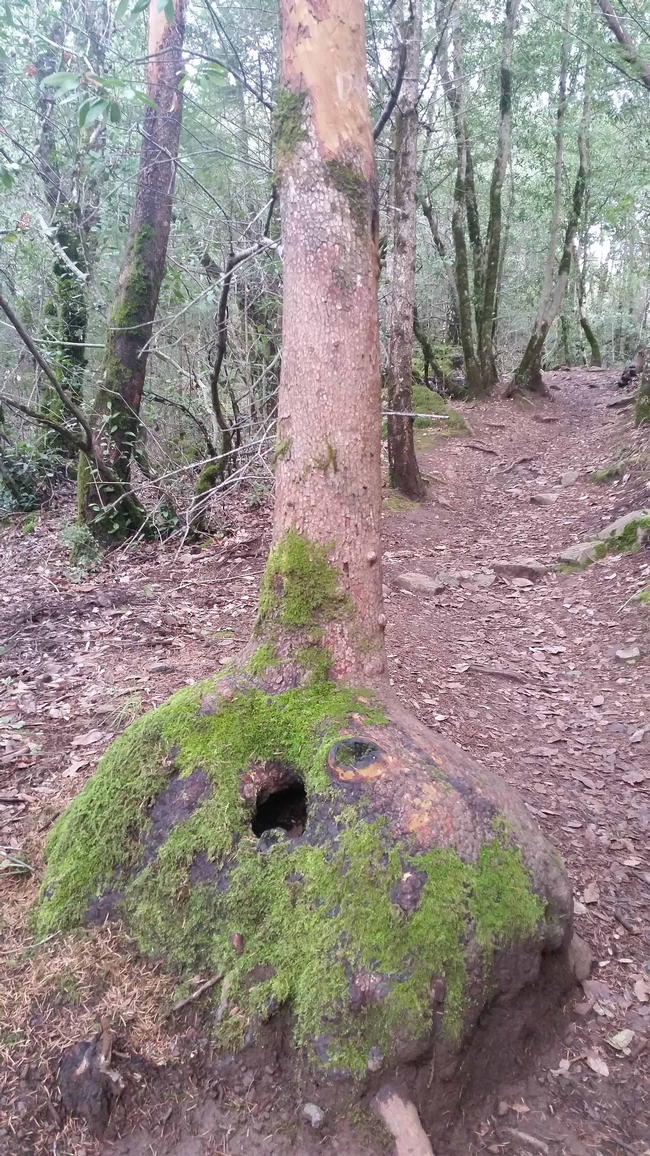By Laura Lukes, UC Master Gardener of Butte County, May 17, 2019
A beautiful tree sits on the north side of Little Chico Creek, shading the picnic table at site #34 in Lower Bidwell Park. Its thick, smooth lower branches are perfect for climbing, and its form is both rounder and more symmetrical than its relatives at higher elevations. And its occurrence at our low altitude (elevation 197 feet) is rare.

Captain George Vancouver of the British Royal Navy commanded a voyage of exploration and diplomacy from 1791 to 1795 which circumnavigated the globe and made contact with five continents. Madrone's species name honors the Scottish surgeon, botanist and naturalist, Archibald Menzies, who noted this tree during Vancouver's voyage of exploration. Menzies, who spent many years at sea serving with the Royal Navy and on private merchant ships, recognized its similarity to the European arbutus, A. unedo, which today is a popular landscape tree in Chico. Its red fruits are shaped like strawberries, and in fact the Spanish word madroño translates as “strawberry tree.” Other common names include madroa, madroo, madroña, and bearberry.

The madrone has evolved an effective method of seed regeneration: each berry contains between three and 30 seeds, and when the berries dry they develop hooked barbs that can latch onto the fur and skin of passing mammals, hitching a ride to colonize new locations.
The Pacific madrone ranges in height from about 33 to 82 feet but can reach up to 100 feet or more in ideal conditions. In those perfect conditions, it can reach a thickness of 5 to 8 feet at the trunk, much like an oak tree. Ideal conditions include a sunny site such as a south or west facing slope with soil that is well drained and lime free.
The largest known specimen of Pacific madrone lived in Joshua Creek Canyon Ecological Reserve on the Big Sur Coast. At least 125 feet tall and more than 25 feet in circumference, and listed on the American Forests National Big Tree list, it sadly was severely burned in the 2016 Soberanes Fire.

A massive, wide-spreading root system increases its ability to withstand summer drought. In fact, the tree prefers dry, well-draining soils and does not tolerate direct watering during the summer months. Once established, Pacific madrone is windfirm, drought enduring, and somewhat tolerant of wet, freezing conditions.

Pacific madrone is a particularly beautiful tree, with its reddish curved trunks supporting a broad, spreading crown of deep green leaves. It is most often seen as a single specimen tree displaying its finery among the more common Douglas fir and tanoak. It is currently declining throughout most of its range, unfortunately due to 100 years of forest fire control and urban development in its native habitat. We are lucky to have our lovely, rare specimen in Lower Bidwell Park.
For more information on gardening in our area, visit the UC Butte County Master Gardener webpage at: http://ucanr.edu/sites/bcmg/. If you have a gardening question or problem, call our Hotline at (530) 538-7201 or email mgbutte@ucanr.edu.